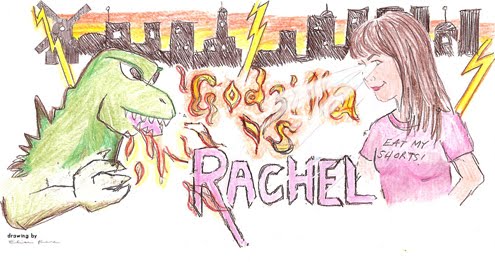Have you gone to the Velaslavasay Panorama. Yes or no?
No: Go there as soon as you can (It's right by USC on 24th Street off of Hoover, you have no excuse not to go).
Yes: Go back again.
What is the Velaslavasay Panorama you may ask? It's an amazing place of wonder and old-timey-ness that specializes in, you guessed it, panoramas! What's a panorama you ask? Well, a long time ago before television, people wanted to be entertained and see the sights of the world. But travelling back in yesteryear? Even more of a hassle than today. So panoramas were created (2D (moving picture scrolls) and 3D) to entertain and educate the masses. Take a look!
Here's their official website for more information: http://www.panoramaonview.org/index.html
Time for a tangent: I'm pretty sure this interview was done the first time I visited the panorama. I think that even might be my hand cranking the panorama at 1:26. The lady in charge said I could give the cranking a try (I felt so special!) and it was a lot more difficult than I thought it would be, so I wasn't paying attention to the photographer.
Time for another tangent: I bought a mini version of the panorama to take home. I would have put up some pictures of my tiny panorama, but as I was importing the photos, my stupid picture file got corrupted, now I can't open any of them, and I'm trying hard not to have a computer-induced brain meltdown, but I hate computers, and this rant could go on for a very long time, but I'm sure it would bore you, so I'll finish it in my head.
Back on topic: Anyway, all of these panoramas reminded me of kamishibai!
I bet you've got another question. What is kamishibai? Kamishibai is a Japanese art of storytelling. It is told through a series of illustrations that are presented in a tiny wooden box. A kamishibaiya (a storyteller) narrates the story and performs the voices of all of the characters. Unlike their Western panorama counterpart, kamishbais typically feature stories with a narrative (panoramas usually are travelogues without a plot), but there are occasions when kamishibai is used for informational purposes.
 Here is a kamishibaiya telling a story. A kamishibaiya would make money by selling candy before the performance.
Here is a kamishibaiya telling a story. A kamishibaiya would make money by selling candy before the performance. Eric P. Nash's book, Manga Kamishibai, is a wonderful history lesson in Kamishibai. He looks at kamishibai's golden age in the 1930s, how kamishibai was used during World War II, and kamishibai's death by television (first called denki (electric) kamishibai, due to it's similarity to the paper theater).
The book also features lots of wonderful original kamishibai art.
Note: So I took more great pictures from the kamishibai book. Including one of a kamishibai 1960s Batman and Robin. Oh the garishness, it was awesome. But because my stupid computer is a whole lot of stupid, you don't get to see them. You're just going to have to check out the book from the library once I return it.
Here you can see some kamishibaiya in action:
Old school (you've got to make an effort and click on the link, it won't let me embed it):




No comments:
Post a Comment